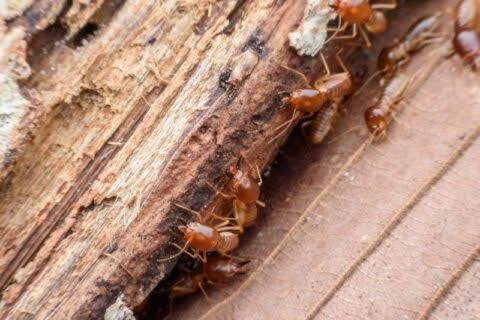Termites, one of the worst pests on earth, cause billions yearly in property damage. Homeowners, business owners, and other property owners need to take proactive measures to detect and eliminate infestations of termites before they become serious. A termite inspection procedure is vital to identify these pests quickly and prevent structural damage. The article discusses your property’s importance, process, and protection from silent destroyers.
Why Is It Important To Conduct Termite Checks?
Termites may go unnoticed until they cause major damage to a home or building. These pests eat wood, causing structural damage to homes and buildings. According to the California Structural Pest Control Board, the damage caused by termites is greater than that of natural disasters, including storms and fires. Regular inspections enable homeowners to detect early termite activity, which can be treated before severe damage occurs.
The National Pest Management Association also recommends professional pest inspections as a preventative measure, even if termite activity has not been detected. The cost of treatment and inspections is considerably less than repairing damage to structures.
Signs Of Termite Damage
If you see the following signs, it is time to book a termite examination:
- Murky Tubes: These tubes are made from dirt and saliva. Termites build them to move between the nest and their food source.
- Hollow-Sounding Wood: The inside of wooden structures may be eaten by termites if they sound hollow.
- Excessive Wings: The termites’ wings are often found around windows and doors after swarm.
- Termite Frass: Drywood Termites excrete wood-colored droppings similar to sawdust.
- Bubbled or Warped Paint: Termite activities under the surface could cause paint to appear bubbled.
A termite test is recommended every year, even if no signs of infestation are visible.
The Termite Inspection Procedure
A professional termite examination follows a methodical approach to detect the existence of termites. Here’s what to expect from the inspection process:
1. Exterior Examination
A licensed inspector examines the exterior, including the home’s foundation and any wooden structures. They will also look at landscaping elements such as trees or mulch beds and look for visible signs such as wood damage, mud tubes, or swarmers.
2. Interior inspection
The inspector will also check wooden furniture and baseboards in the home for termite damage. The inspector pays particular attention to damp areas, such as bathrooms, basements, and kitchens.
3. Use advanced detection tools
Some inspections will use moisture meters or infrared and acoustic detectors to detect hidden termite activities behind walls or underneath floors. These tools help to improve the accuracy.
4. Inspection & Recommendations
After the inspection, a pest control professional provides a comprehensive report that outlines any signs or vulnerabilities of the structure. If termites can be detected, various treatment options include chemical barrier systems, baiting systems, and fumigation.
5. Preventive Measures
Even if the inspector does not find any termites, he may still suggest some preventive measures for your property. These include:
- Removing Wood-to-Soil Contact
- Firewood is not allowed in the house
- Reduce moisture by fixing leaks
- Use termiticides in the foundation area
Termite Check For Homebuyers
You should include an inspection of termites in your home-buying process. Many lenders demand a Wood-Destroying Organisms Inspection Report before approving the mortgage. Even if the inspection is not mandatory, it will help ensure your property is free of termites and structural damage.
How Often Do You Need A Termite Inspector?
Experts advise scheduling a termite professional inspection at least every year, particularly for areas susceptible to termite invasions. If you live in an area with a higher risk of termites or have faced problems, you may need to conduct semi-annual pest inspections.
How To Choose A Reputable Termite Inspector?
Consider these factors when choosing a termite inspector:
- License & Certification: Ensure that the inspector is licensed and adheres to all state regulations.
- Experience: Consider a termite control company that has a lot of experience.
- Customer Review: Check online testimonials and reviews to verify their reliability.
- Inspection Procedure: Learn about the inspection tools and techniques that are used.
Local Termite Inspection Services
You can find trusted service providers by searching https://maps.app.goo.gl/1fMrss2T4NrXZn3q9. Regular inspections can save you money in the long term and protect your investment.
Conclusion
An inspection procedure for termites is essential to protecting your home and preventing costly damage. Regular inspections are important for detecting infestations early and allowing treatment to be effective. You can have peace of mind by scheduling an annual termite test, regardless if you’re a homebuyer, a business owner, or a homeowner.

